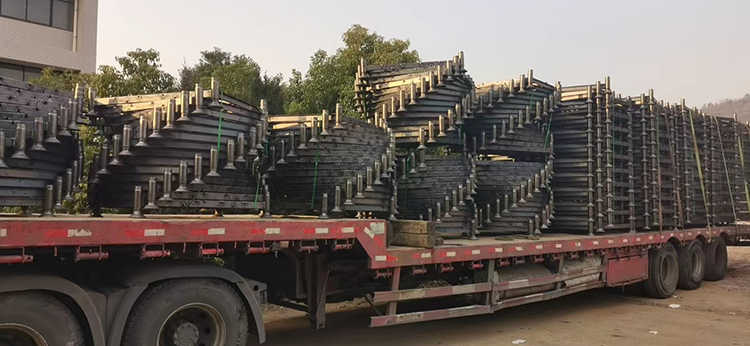The first 400 bases of stack racks are ready for hot-dipped galvanizing surface treatment. The total amount of order is 2000 base sets of stack racks. This type of racks are usually used in cold food storage, the temperature in warehouse is usually under -18℃.
In our line, there are two ways to do surface treatment, one is powder-coating, the other one is galvanizing to make our racks corrosion-resistant. Galvanizing has two types: cold galvanizing and hot-dipped galvanizing. Hot-dipped galvanizing which is applied in our products this time has better performance on corrosion-resistant than powder-coating and cold galvanizing. And it is also the most expensive one compare with powder-coating and cold galvanizing.
Why is it so expensive? Below are the process of hot-dipped galvanizing:
Surface Preparation
When the fabricated steel arrives at the galvanizing facility, it is hung by wire or placed in a racking system which can be lifted and moved through the process by overhead cranes. The steel then goes through a series of three cleaning steps; degreasing, pickling, and fluxing. Degreasing removes dirt, oil, and organic residues, while the acidic pickling bath will remove mill scale and iron oxide. The final surface preparation step, fluxing, will remove any remaining oxides and coat the steel with a protective layer to prevent any further oxide formation prior to galvanizing. Proper surface preparation is critical, as zinc will not react with unclean steel.
Galvanizing
After surface preparation, the steel is dipped in the molten (830 F) bath of at least 98% zinc. The steel is lowered into the kettle at an angle that allows air to escape from tubular shapes or other pockets, and the zinc to flow into, over, and through the entire piece. While immersed in the kettle, the iron in the steel metallurgically reacts with the zinc to form a series of zinc-iron intermetallic layers and an outer layer of pure zinc.
Inspection
The final step is an inspection of the coating. A very accurate determination of the quality of the coating can be achieved by a visual inspection, as zinc does not react with unclean steel, which would leave an uncoated area on the part. Additionally, a magnetic thickness gauge can be used to verify the coating thickness complies with specification requirements.
Post time: Jan-09-2023

